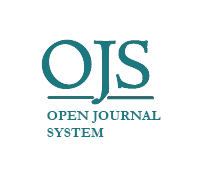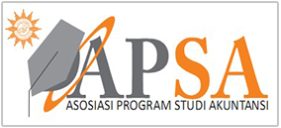Fraud Diamond Model To Detecting Financial Reporting Fraud: Effectiveness Social Media Transparency as A Moderating
DOI:
https://doi.org/10.22219/jrak.v14i4.33984Keywords:
Capability, Financial Statement Fraud, Opportunities, Pressure, Rationalization, Social MediaAbstract
Purpose: The purpose of this study is to test and analyze pressure factors, opportunities, rationalization and capability in detecting financial statement fraud. Also, testing and analyzing the effectiveness of social media transparency in moderating the perspective of the diamond fraud model to detect indications of financial statement fraud.
Methodology/approach: The data used in this study are secondary data obtained by documentation techniques. The population of this study is all State-Owned Enterprise (SOE) companies in 2022.
Findings: The results found that there was a positive influence between pressure, opportunity and the ability to detect financial statement fraud, while the negative effect was only found in rationalization. The effectiveness of social media transparency strengthens the relationship between pressure variables, rationalization, the ability to detect indications of financial statement fraud. Meanwhile, the effectiveness of social media transparency weakens the relationship between opportunity variables to detect indications of financial statement fraud.
Practical implications: This research contribution can be used as input to companies to detect model factors, namely diamond fraud in detecting financial statement fraud and can be used for investors to be more careful in investing funding in certain companies through the impact of financial statement fraud.
Originality/value: The Diamond fraud model in detecting financial statement fraud with its moderation variable is the effectiveness of social media transparency. This research is a replication and development of previous research, the difference: this study uses data from all state-owned companies, to strengthen the theory of the new diamond fraud model and ascertain whether it can be used as a reference to find out the causes of financial statement fraud, this study uses the effectiveness of social media transparency as a moderation variable
Downloads
References
Abdullahi, R., & Mansor, N. (2018). Fraud prevention initiatives in the Nigerian public sector: understanding the relationship of fraud incidences and the elements of fraud triangle theory. Journal of Financial Crime, 1–18. https://doi.org/https://doi.org/10.1108/JFC-02-2015-0008
Beasley, M. . (1996). An Empirical Analysis of the Relation between the Board of Director Composition and Financial Statement Fraud. The Accounting Review, 71, 443–465.
Bertot, J. C., Jaeger, P. T., & Grimes, J. M. (2010). Using ICTs to create a culture of transparency: E-government and social media as openness and anti-corruption tools for societies. Government Information Quarterly, 27(3), 264–271. https://doi.org/10.1016/j.giq.2010.03.001
Boateng, S. L. (2019). Online relationship marketing and customer loyalty: a signaling theory perspective. International Journal of Bank Marketing, 37(1), 226–240. https://doi.org/10.1108/IJBM-01-2018-0009
Christian, N., Basri, Y. Z., & Arafah, W. (2019). Analysis of Fraud Triangle , Theory to Detecting Corporate Fraud in Indonesia. The International Journal of Business Management and Technology, 3(4), ISSN 2581-3889.
Connelly, B. L., Certo, S. T., Ireland, R. D., & Reutzel, C. R. (2011). Signaling theory: A review and assessment. Journal of Management, 37(1), 39–67. https://doi.org/10.1177/0149206310388419
Demetriades, P., & Owusu-Agyei, S. (2022). Fraudulent financial reporting: an application of fraud diamond to Toshiba’s accounting scandal. Journal of Financial Crime, 29(2), 729-763. https://doi.org/https://doi.org/10.1108/JFC-05-2021-0108
Dewi, N. F., Ferdous Azam, S. M., & Yusoff, S. K. M. (2019). Factors influencing the information quality of local government financial statement and financial accountability. Management Science Letters, 9(9), 1373–1384. https://doi.org/10.5267/j.msl.2019.5.013
Dyck, A., Volchkova, N., & Zingales, L. (2008). Hedge Funds Are New Sheriffs of Boardroom. The Journal of Finance •, LXIII(3). http://www-2.rotman.utoronto.ca/facbios/file/dyck_volchkova_zingales.pdf
Garay, U., González, M., Guzmán, A., & Trujillo, M. A. (2013). Internet-based corporate disclosure and market value: Evidence from Latin America. Emerging Markets Review, 17(1), 150–168. https://doi.org/10.1016/j.ememar.2013.09.002
Gjaltema, J., Biesbroek, R., & Termeer, K. (2020). From government to governance…to meta-governance: a systematic literature review. Public Management Review, 22(12), 1760–1780. https://doi.org/10.1080/14719037.2019.1648697
Gorwa, R. (2019). What is platform governance? Information Communication and Society, 22(6), 854–871. https://doi.org/10.1080/1369118X.2019.1573914
Hansen, R. S., & Crutchley, C. E. (1989). Agency Theory of Corporate Ownership , Managerial Corporate Dividends Leverage , and Corporate Dividends. Financial Management, 18(4), 36–46.
Jensen, M. C., & Meckling, W. H. (1976). Theory of the firm: managerial behavior, agency costs and ownership structure. Journal of Financial Economics, 3, 305–360. https://doi.org/10.1177/0018726718812602
Khamainy, A. H., Ali, M., & Ali, M. (2021). Detecting financial statement fraud through new fraud diamond model: the case of Indonesia. Journal of Financial Crime, 29(3), 925–941. https://doi.org/https://doi.org/10.1108/JFC-06-2021-0118
Kouaib, A., & Almulhim, A. (2019). Earnings manipulations and board’s diversity: The moderating role of audit. Journal of High Technology Management Research, 30(2), 100356. https://doi.org/10.1016/j.hitech.2019.100356
Kukreja, G., Gupta, S. M., Adel, & Mohammed Sarea, S. K. (2020). Beneish M-score and Altman Z-score as a catalyst for corporate fraud detection. Journal of Investment Compliance, 21(4), 231–241. https://doi.org/https://doi.org/10.1108/JOIC-09-2020-0022
Martens, W., Yapa, P. W. S., & Safari, M. (2020). The impact of financial statement comparability on earnings management: Evidence from frontier markets. International Journal of Financial Studies, 8(4), 1–25. https://doi.org/10.3390/ijfs8040073
Miller, G. S. (2006). The press as a watchdog for accounting fraud. Journal of Accounting Research, 44(5), 1001–1033. https://doi.org/10.1111/j.1475-679X.2006.00224.x
Mitchell, R., & Meacheam, D. (2011). Knowledge worker control: Understanding via principal and agency theory. Learning Organization, 18(2), 149–160. https://doi.org/10.1108/09696471111103740
Mitnick, B. M. (2015). Agency Theory. Wiley Encyclopedia of Management, 1–6. https://doi.org/10.1002/9781118785317.weom020097
Noble, M. R. (2019). Fraud diamond analysis in detecting financial statement fraud. The Indonesian Accounting Review, 9(2), 121. https://doi.org/10.14414/tiar.v9i2.1632
Olanrewaju, A. S. T., Hossain, M. A., Whiteside, N., & Mercieca, P. (2020). Social media and entrepreneurship research: A literature review. International Journal of Information Management, 50(May 2019), 90–110. https://doi.org/10.1016/j.ijinfomgt.2019.05.011
Omukaga, K. O. (2020). Is the fraud diamond perspective valid in Kenya? Journal of Financial Crime, 28(3), 810–840. https://doi.org/10.1108/JFC-11-2019-0141
Rustiarini, N. W., T, S., Nurkholis, N., & Andayani, W. (2019). Why people commit public procurement fraud? The fraud diamond view. Journal of Public Procurement, 19(4), 345–362. https://doi.org/10.1108/JOPP-02-2019-0012
Skousen, C. J., Smith, K. R., & Wright, C. J. (2009). Detecting and Predicting Financial Statement Fraud: The Effectiveness of The Fraud Triangle and SAS No. 99 in Corporate Governance and Firm Performance. In Advances in Financial Eonomics: Corporate Governance and PerformancelSt edition, JAI Publishing, Emerald Group (Vol. 13, Issue 99). https://doi.org/https://doi.org/10.1108/S1569-3732(2009)0000013005
Sunardi, & Amin, M. N. (2018). Fraud detection of financial statement by using fraud diamond perspective. International Journal of Development and Sustainability, 7(3), 878–891. www.isdsnet.com/ijds
Taj, S. A. (2016). Application of signaling theory in management research: Addressing major gaps in theory. European Management Journal, 34(4), 338–348. https://doi.org/10.1016/j.emj.2016.02.001
Tran, Y. T., Nguyen, N. P., & Hoang, T. C. (2021). The role of accountability in determining the relationship between financial reporting quality and the performance of public organizations: Evidence from Vietnam. Journal of Accounting and Public Policy, 40(1), 106801. https://doi.org/10.1016/j.jaccpubpol.2020.106801
Triyanto, D. N. (2019). Detection of Financial Reporting Fraud: The Case of Socially Responsible Firms. Journal of Economics, 22(3), 399–410. https://doi.org/10.14414/jebav.v22i3.1792
Ullah, K., & Bagh, T. (2019). The Effect of Corporate Social Responsibility Disclosure, Family Ownership, and Good Corporate Governance in Tax Avoidance I. 10(6), 44–49. https://doi.org/10.7176/RJFA
Utami, I., Wijono, S., Noviyanti, S., & Mohamed, N. (2019). Fraud diamond, Machiavellianism and fraud intention. International Journal of Ethics and Systems, 35(4), 531–544. https://doi.org/10.1108/IJOES-02-2019-0042
Wolfe, D. T., & Hermanson, D. R. (2004). The FWolfe, D. T. and Hermanson, D. R. (2004) ‘The Fraud Diamond : Considering the Four Elements of Fraud: Certified Public Accountant’, The CPA Journal, 74(12), pp. 38–42. doi: DOI:raud Diamond : Considering the Four ElemWolfe, D. T. and Hermanson, D. R. The CPA Journal, 74(12), 38–42.
Zimmerman, J. L. (1977). Discussion of The Municipal Accounting Maze: An Analysis of Political Incentives. Journal of Accounting Research, 15(1977), 145. https://doi.org/10.2307/2490637
Published
Issue
Section
License
Copyright (c) 2024 Ahmad Juanda, Setu Setyawan, Lia Candra Inata

This work is licensed under a Creative Commons Attribution-NonCommercial-ShareAlike 4.0 International License.

Jurnal Reviu Akuntansi dan Keuangan is licensed under a Creative Commons Attribution-NonCommercial-ShareAlike 4.0 International License.
Authors who publish with this journal agree to the following terms:
- Authors retain copyright and grant the journal right of first publication with the work simultaneously licensed under a Creative Commons Attribution-NonCommercial-ShareAlike 4.0 International License that allows others to share the work with an acknowledgement of the work's authorship and initial publication in this journal.
- Authors are able to enter into separate, additional contractual arrangements for the non-exclusive distribution of the journal's published version of the work (e.g., post it to an institutional repository or publish it in a book), with an acknowledgement of its initial publication in this journal.
- Authors are permitted and encouraged to post their work online (e.g., in institutional repositories or on their website) prior to and during the submission process, as it can lead to productive exchanges, as well as earlier and greater citation of published work (See The Effect of Open Access).










